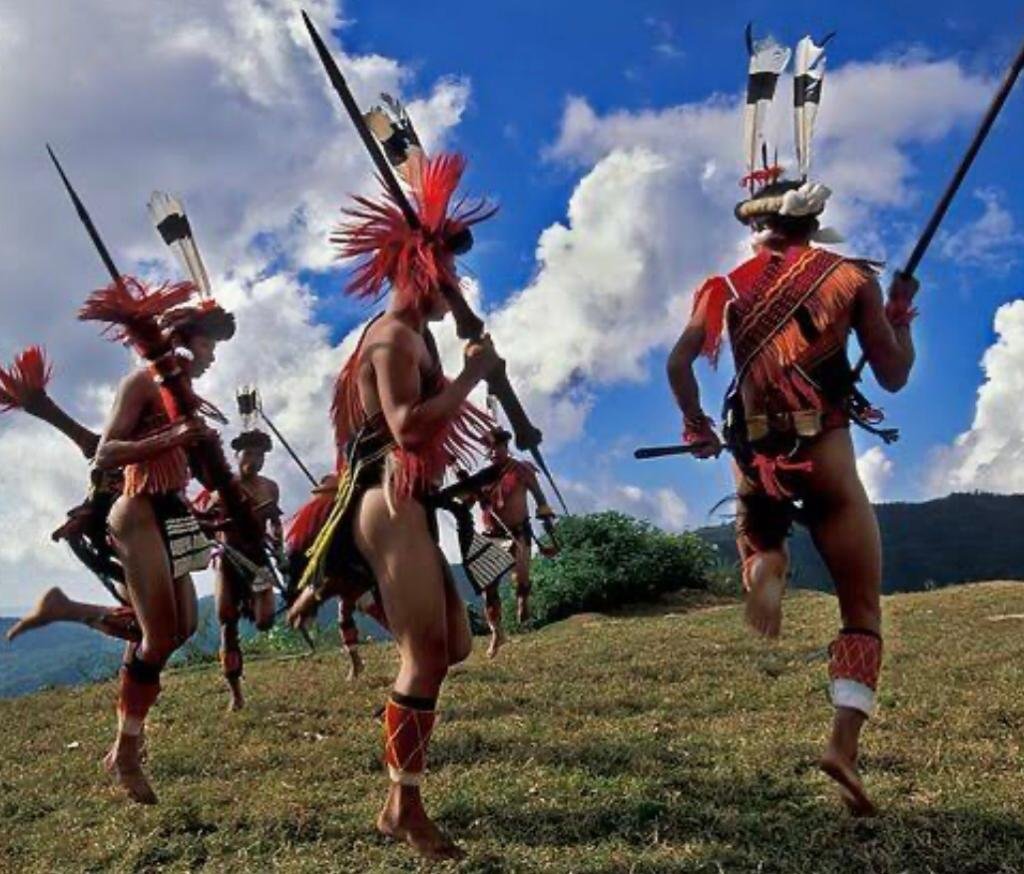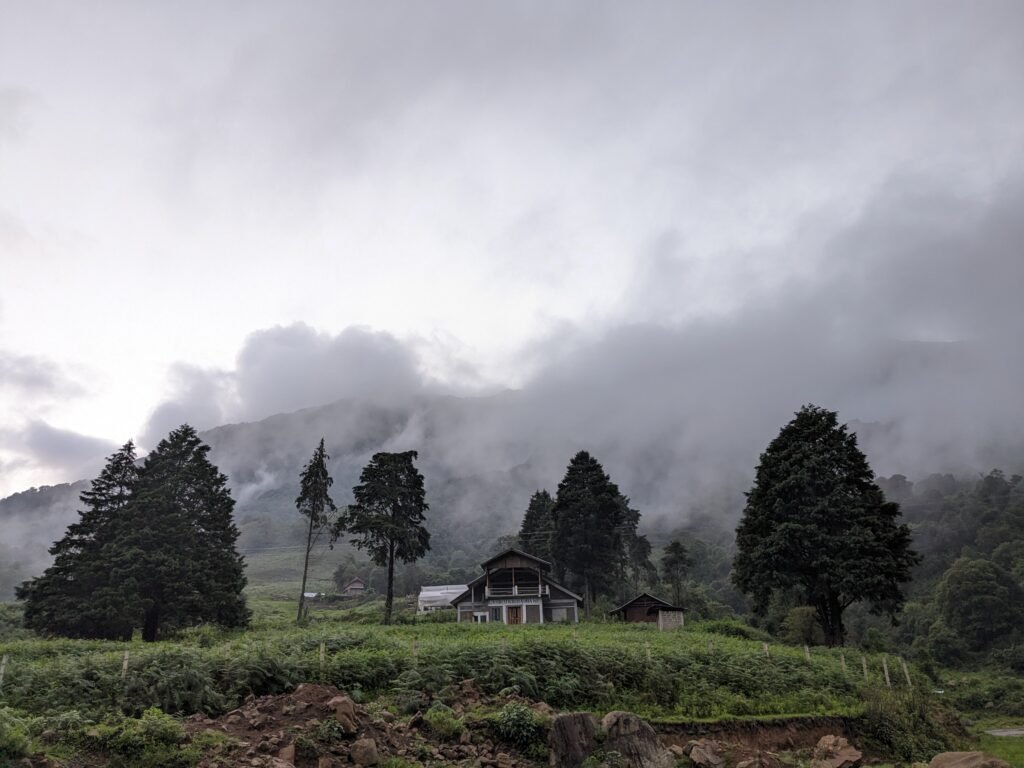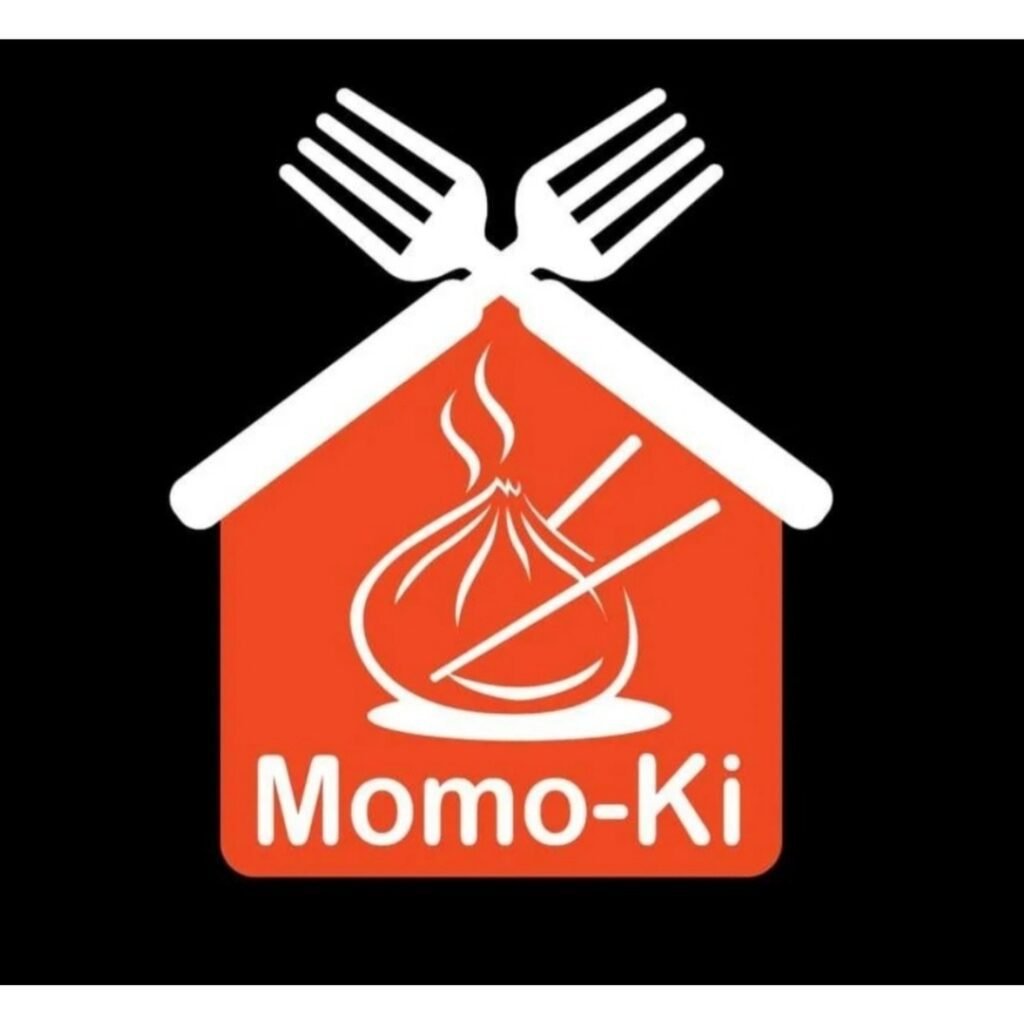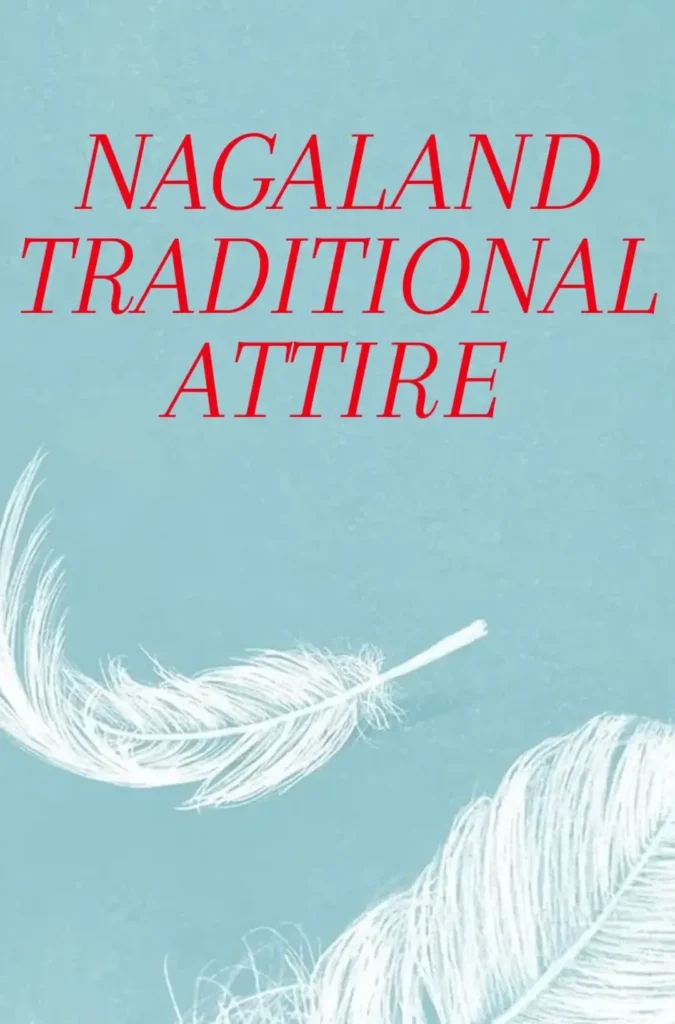Nagaland is a land of diverse cultures and traditions, each with its unique identity and folk dances. These folk dances play a significant role in the lives of the Naga people, serving as a medium for expressing emotions, celebrating festivals, and preserving their rich cultural heritage. Let’s explore some of the prominent folk dances of Nagaland and their significance.
Naga Warrior Dance

The Naga Warrior Dance is one of Nagaland’s most iconic and widely recognised folk dances. Often performed by men, this dance portrays the bravery and courage of the Naga warriors. Dancers don traditional warrior attire, which includes ornate headgear, spears, shields, and other traditional weapons. The dance’s rhythmic movements and energetic footwork mimic a warrior’s movements in battle. It is performed during festivals and social gatherings to welcome guests, showcasing the Naga community’s martial spirit and historical prowess.
Sekrenyi Dance

Sekrenyi is a significant Angami Naga festival celebrated in February. The Sekrenyi Dance is an integral part of this festival, which marks the purification of the village and the people. The dance involves men and women dressed in their finest traditional garments. They dance in circles, swaying to the melodious tunes of traditional musical instruments. Sekrenyi Dance symbolises purification, unity, and communal harmony among the Angami tribe.
Zeliang Dance

The Zeliang tribe has several traditional dances, each with unique significance. The “Zeliang Rou” is a dance that reflects unity, brotherhood, and cooperation among the Zeliang community. Performed during various celebrations, it involves both men and women forming a circle and dancing together, displaying their unity and collective strength.
Chang Lo or Rope Dance
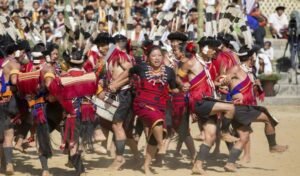
The Chang tribe performs the Chang Lo or Rope Dance, showcasing their agricultural lifestyle. In this dance, men and women hold hands and form a long chain while dancing in rhythmic steps. A long bamboo pole is used, around which the dancers skillfully move, representing their bond with nature and their interdependence on agriculture for sustenance.
Sumi Dance
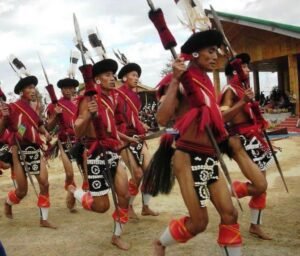
Sumi dance is not just a form of entertainment but also serves as a means to preserve and pass down the cultural heritage of the Sumi tribe from one generation to the next. It embodies the community’s identity, history, and values, making it an essential aspect of their social and cultural life.
Aoling Festival Dance

The Konyak tribe celebrates the Aoling Festival with great fervour. During this festival, the Konyak community performs traditional dances to seek blessings from their ancestors and gods. The dance is accompanied by traditional music and performed by both men and women, each wearing their unique traditional attire adorned with feathers, animal bones, and colourful beads. Aoling Festival Dance signifies the tribe’s belief in their cultural roots and reverence for nature.
Moatsu Festival Dance
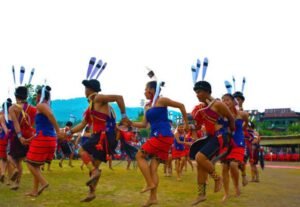
The Ao tribe celebrates the Moatsu Festival with great enthusiasm. The Moatsu Festival Dance is an essential part of the festivities. Dancers, both men and women, don their finest traditional attire and perform in circles, signifying the unending cycle of life and the importance of unity and cooperation in their community.
Tsungremong Festival Dance
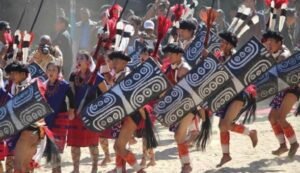
Observed by the Ao tribe, Tsungremong is an agricultural festival held in August. The festival dance during Tsungremong involves rhythmic footwork and hand movements, expressing gratitude for a bountiful harvest.
Yemshe Festival Dance

The Pochury tribe celebrates the Yemshe Festival to mark the end of the agricultural year. The festival dance showcases the tribe’s vibrant culture, with dancers donning traditional outfits and dancing to the tunes of traditional instruments.
Butterfly Dance
This dance might involve movements imitating the flight of butterflies, symbolizing grace and beauty. It is likely performed during specific festivals or events.
Mayur Dance
The Mayur (peacock) dance is associated with displaying the beauty and grace of peacocks. Dancers may wear costumes inspired by peacock feathers and perform intricate footwork and movements.
Changai Dance
The Changai tribe likely has its own traditional dance, which would have unique features and cultural significance.
Kuki Dance
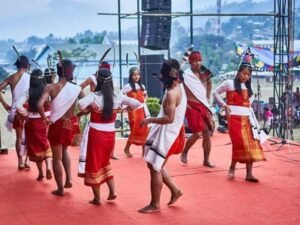
The Kuki tribe, who mainly reside in the states of Manipur, Assam, and Nagaland, likely have their own traditional dance forms showcasing their cultural identity.
Rengma Dance

The Rengma tribe, like other Naga tribes, has its distinct dance forms reflecting their cultural heritage.
Significance of Nagaland Folk Dances
- Cultural Preservation: Nagaland’s folk dances are not just performances but living repositories of the region’s cultural heritage. Through these dances, the tribes pass down their customs, traditions, and values from one generation to another, ensuring the preservation of their identity.
- Social Cohesion: Folk dances in Nagaland bring the community together, fostering a sense of unity and belonging among the tribe members. These dances serve as a way to celebrate life’s joys, bond during important occasions, and overcome challenges collectively.
- Spiritual Connection: Many of these dances are deeply rooted in the tribes’ spiritual beliefs and rituals. They are often performed during festivals and ceremonies to seek blessings from the gods, express gratitude for a bountiful harvest, and ward off evil spirits.
- Tourism and Cultural Exchange: Nagaland’s folk dances are not only cherished by the locals but also attract tourists worldwide. They offer a unique glimpse into the region’s rich culture and traditions, promoting cultural exchange and understanding.
Nagaland’s folk dances are an integral part of the region’s cultural fabric, preserving the heritage and promoting the unity and diversity of its tribes. These dances are a testament to the Naga people’s resilience, close connection with nature, and rich tapestry of traditions that continue to thrive in the modern world.
